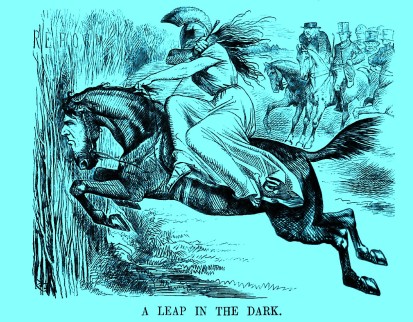
Disraeli (horse) taking Britannia into the unknown with the 1867 Reform Act
This month marks the 150th anniversary of the passing of the 1867 Reform Act. Introduced by Benjamin Disraeli and Lord Derby’s Conservative government, it added around a million voters to the register, primarily in borough constituencies. This greatly exceeded the numbers who would have been enfranchised by the Liberal ministry’s 1866 reform bill, put forward by William Gladstone and Lord Russell. Disraeli’s willingness to accept Liberal backbench amendments to the Conservative bill in order to secure its passage – and to keep Gladstone on the back foot – meant that the measure which emerged from the debates in the Commons was rather different from that originally proposed, as many of the safeguards which Disraeli had included to limit the effects of household suffrage were removed.
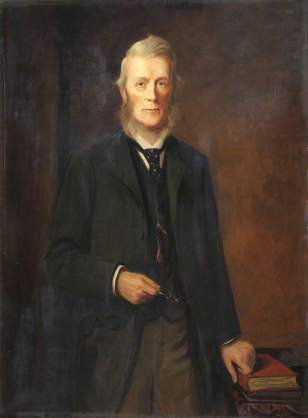
Sir John Tomlinson Hibbert (by unknown artist); photo credit: Lancashire County Council; http://www.artuk.org/artworks/the-right-honourable-sir-john-hibbert-150792
Our MP of the Month, John Tomlinson Hibbert, was among those Liberal backbenchers who took a keen interest in the reform debates and played a prominent part in shaping the measure. Returned as MP for his native Oldham at a by-election in May 1862, he was re-elected in 1865 alongside his fellow Liberal, John Platt. As well as their shared political views, Hibbert was connected to the Platts through business: his father had founded Oldham’s largest engineering firm with Platt’s father in 1822, although by 1854 the Platts had bought out the Hibbert interest. Instead of following in his father’s footsteps, Hibbert qualified as a barrister. Although he did not practise as a lawyer, his legal training proved a valuable asset in his parliamentary career, and John Stuart Mill praised him as ‘rather clever as well as careful in framing amendments’ to legislation. He was also linked to the Platts by marriage: John’s younger brother James, another Liberal MP, who was killed in tragic circumstances in 1857, had married Hibbert’s sister-in-law.
Hibbert made his determination to be an effective constituency MP abundantly clear in his maiden speech, made the day after taking his seat. He highlighted the plight of Lancashire’s workers during the ‘cotton famine’ caused by the greatly reduced supply of raw cotton during the American Civil War. Hibbert also took a particular interest in law and order. He was deeply concerned about the ‘demoralising’ spectacle of public executions, to which spectators travelled on special excursion trains ‘to gratify their depraved appetite’. He made unsuccessful attempts in 1865 and 1866 to legislate for executions to take place privately within gaols. These efforts prompted the Conservative government to take up the question, passing the Capital Punishment within Prisons Act in 1868. Hibbert himself witnessed the first execution held under the Act.
He was also active in select committee work, serving on numerous inquiries. There was, however, much amusement among fellow MPs in June 1866 when Hibbert’s doctor was called to testify before the House that Hibbert would be unable to perform his duties as chairman of the committee on the Helston election petition, having been ‘taken exceedingly ill on his return from the Duke of Devonshire’s party’.
Hibbert played an important role in the debates on the 1867 Reform Act. Although Disraeli described him as ‘a man of extreme and advanced opinions’, he was among those Radicals whose support Disraeli was keen to cultivate in order to pass the bill. Notably, Disraeli tried to persuade the Cabinet to accept Hibbert’s amendment on the complex question of ‘compounding’. The Conservative ministry’s bill stated that those wishing to qualify as voters under the household franchise in boroughs must personally pay their rates, a proviso which would exclude those who ‘compounded’ their rates by paying them to their landlords as part of their rent, for which they received a discount. Hibbert’s amendment aimed to remove this financial disincentive for householders to opt out of compounding in order to be registered as voters by allowing them to continue to pay the reduced amount.
Having failed to convince fellow ministers to accept this amendment, Disraeli not only opposed it, but made the division on the ministry’s alternative proposal a confidence vote. Despite strong support from Gladstone, who gave Hibbert his backing after his own efforts to remove the requirement for personal payment of rates had failed, the amendment was defeated on 9 May. Although unsuccessful, Hibbert’s intervention clearly influenced the Conservative ministry’s actions. With many MPs still dissatisfied, the issue was finally resolved in an extraordinary fashion later that month when Disraeli accepted an amendment from another Liberal backbencher, Grosvenor Hodgkinson, which took the revolutionary step of completely abolishing the practice of compounding.
Hibbert did succeed in making other alterations to the Reform Act. His most significant contribution was to make it illegal for candidates or anyone on their behalf to make payments for transporting voters to the polls in boroughs. Payments for railway tickets or the hiring of carriages and carts to convey voters were often used as a cover for bribery, and had become a major source of expenditure for candidates. Hibbert noted that at the 1865 election, £100,000 of the £800,000 expenditure declared by candidates was spent on the conveyance of voters. Bowing to advice from Gladstone, he agreed that his clause, carried by 166 votes to 101 on 4 July 1867, should apply only to boroughs, not to counties, where the distances which electors had to travel were far greater. He criticised efforts by Irish MPs to exclude certain Irish boroughs from a similar clause in the Irish Reform Act the following year, remarking wryly that he remained to be ‘persuaded that an Irishman could not walk so far as an Englishman’.
Hibbert was re-elected in 1868 for Oldham, whose electorate had been increased five-fold by the 1867 Reform Act. He lost his seat in 1874, but returned to the Commons in 1877. Regarded as ‘one of the most loyal and useful members of the Liberal party’, he held a succession of junior offices in Gladstone’s ministries from 1871. He was ousted from his seat in 1886, but returned to Parliament in 1892, and was knighted the following year. He finally left the Commons following electoral defeat in 1895, having represented his native borough for a total 24 years. He remained active in county politics, serving as chairman of Lancashire County Council until shortly before his death in 1908.*
*From https://victoriancommons.wordpress.com/2017/08/29/mp-of-the-month-john-tomlinson-hibbert-1824-1908/
photos below

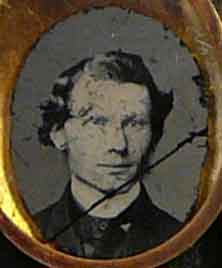
Eliza Anne Schofield b.16 August 1825 d.5 January 1877 and John T Hibbert as a young man from a locket.
More photos below
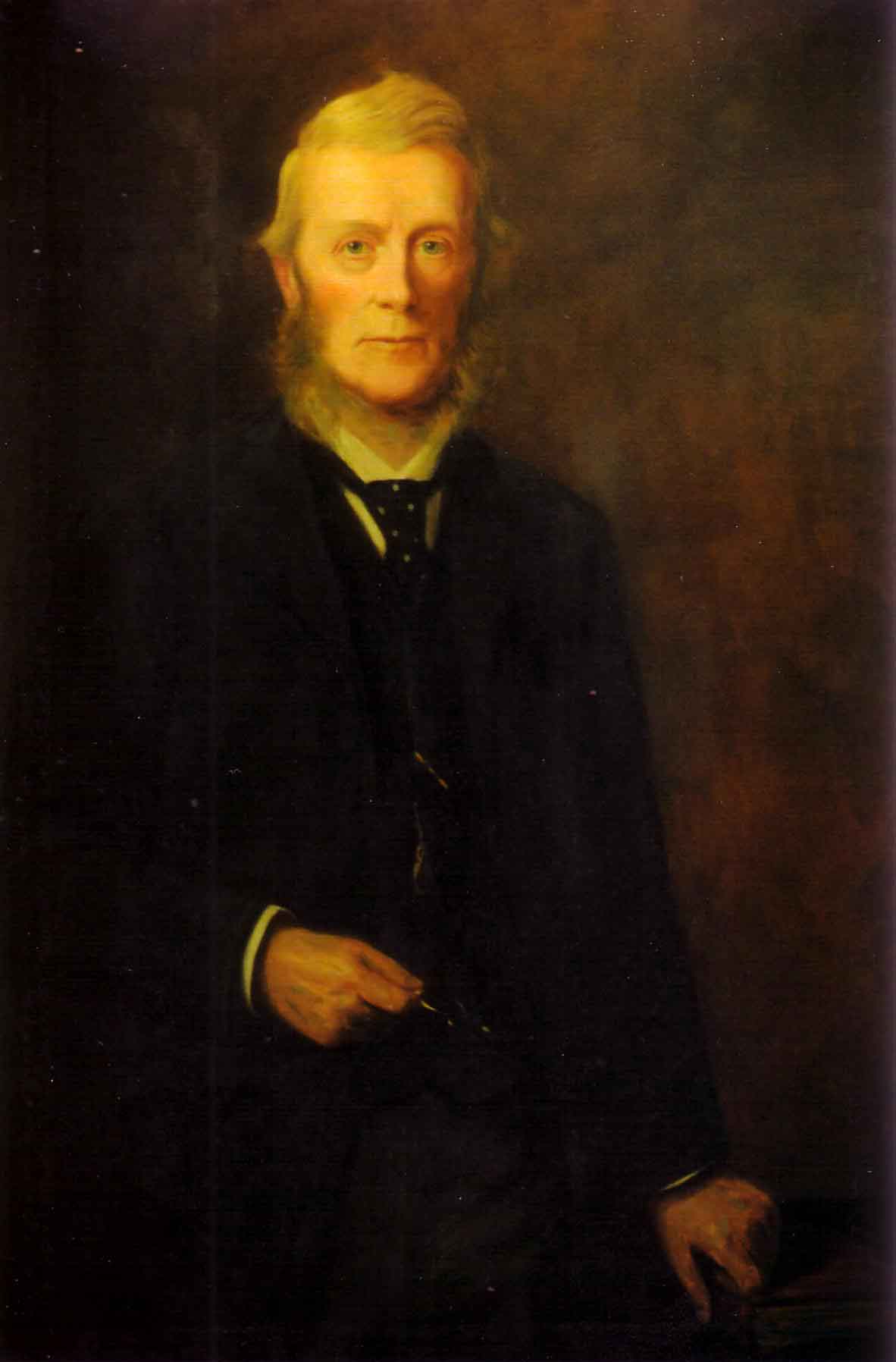
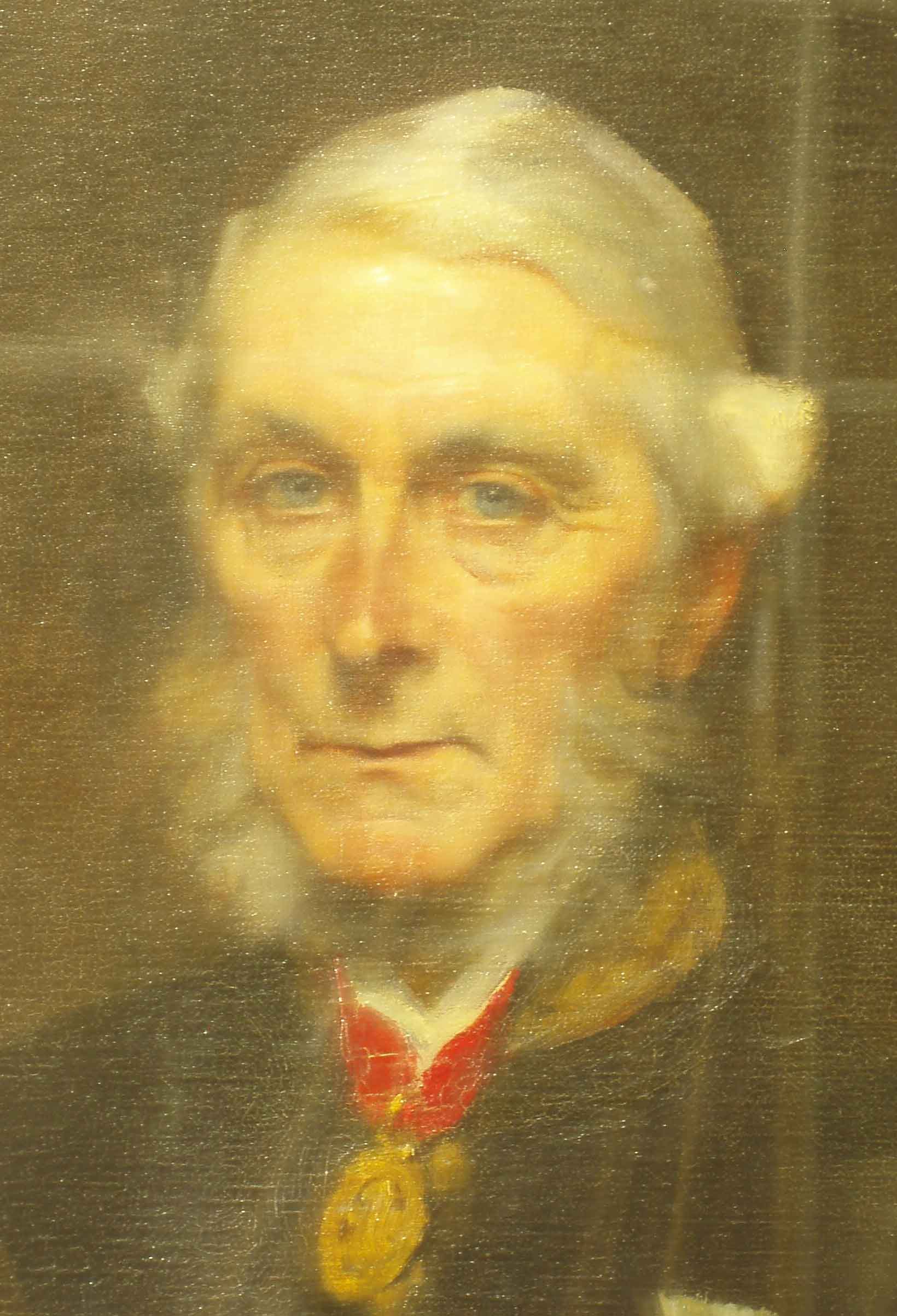
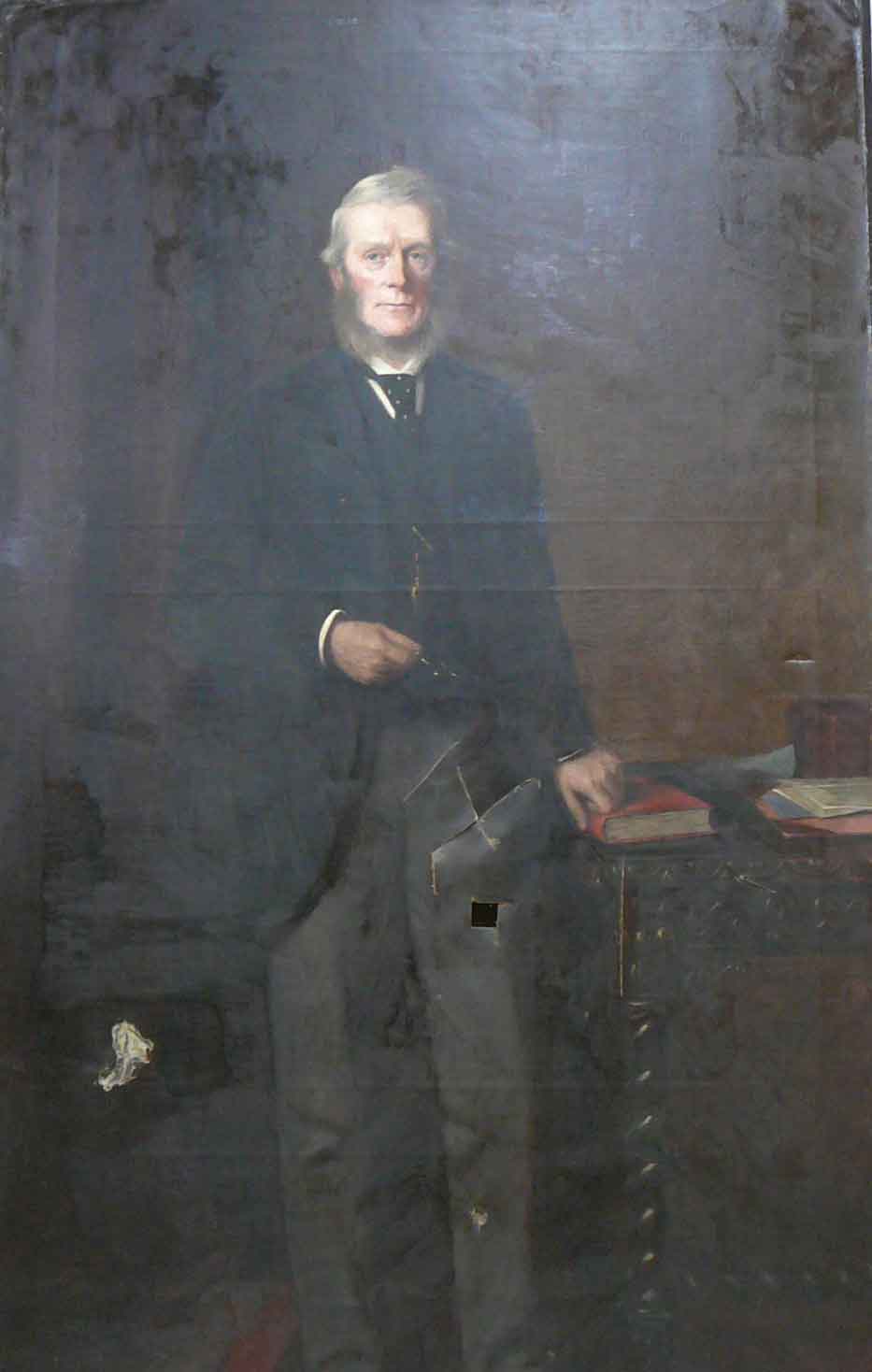
Portraits of Sir John Tomlinson Hibbert KCB b.1824 d.6 November 1908. The right-hand portrait hung on the stairs at the Lancashire County Council offices at Preston and was attacked. A swastika was cut into it.
More photos below
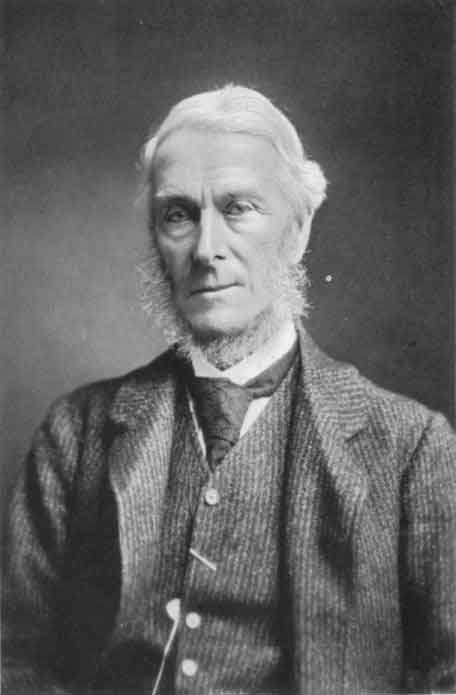
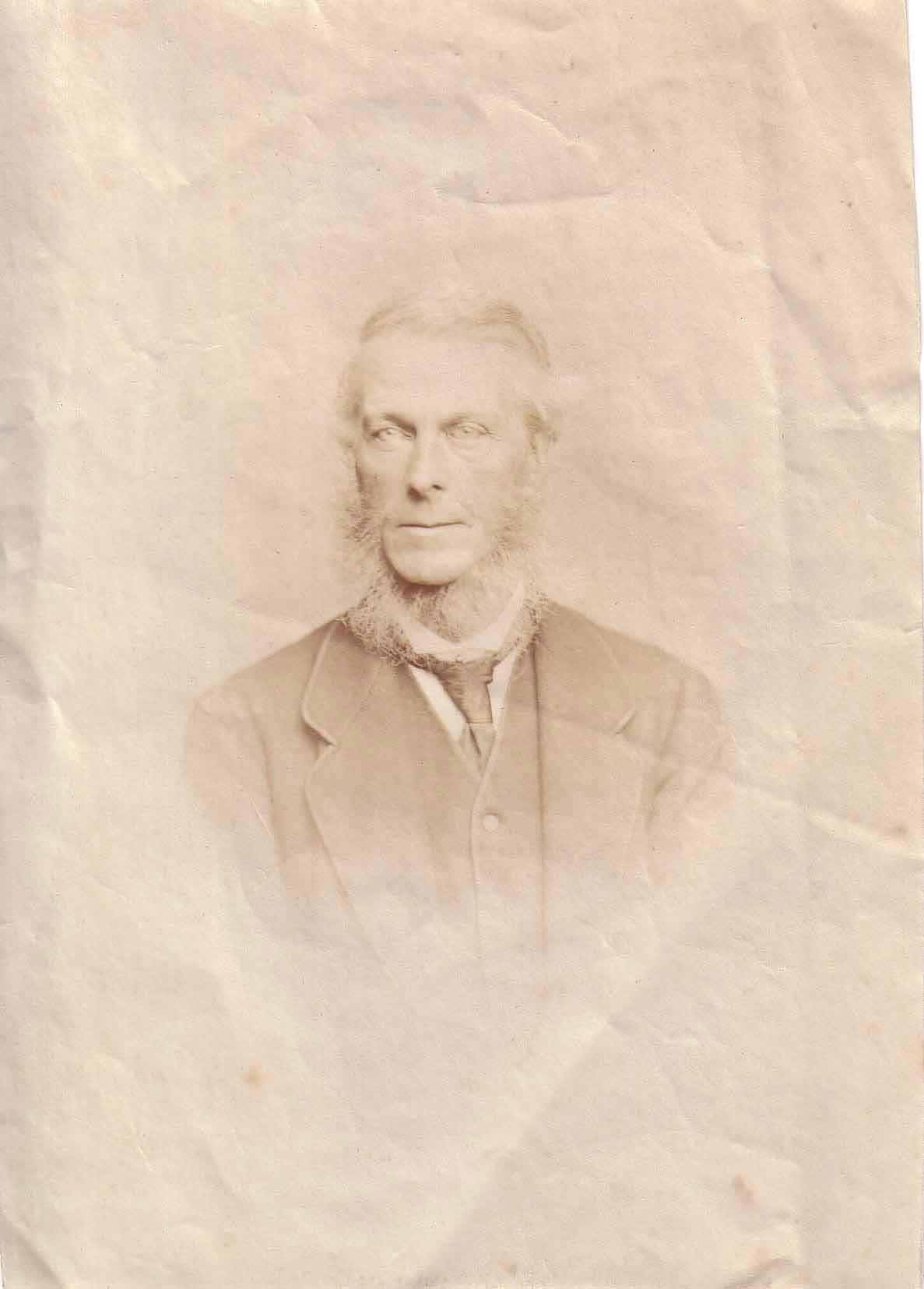
Sir John Tomlinson Hibbert KCB b.1824 d.6 November 1908
More photos below

Sir John Tomlinson Hibbert in 'Japan'. This was a Japanese garden laid out on the hillside opposite the stables at Hampsfield. There were interesting plants there. Such gardens very popular in Victorian times.
More photos below

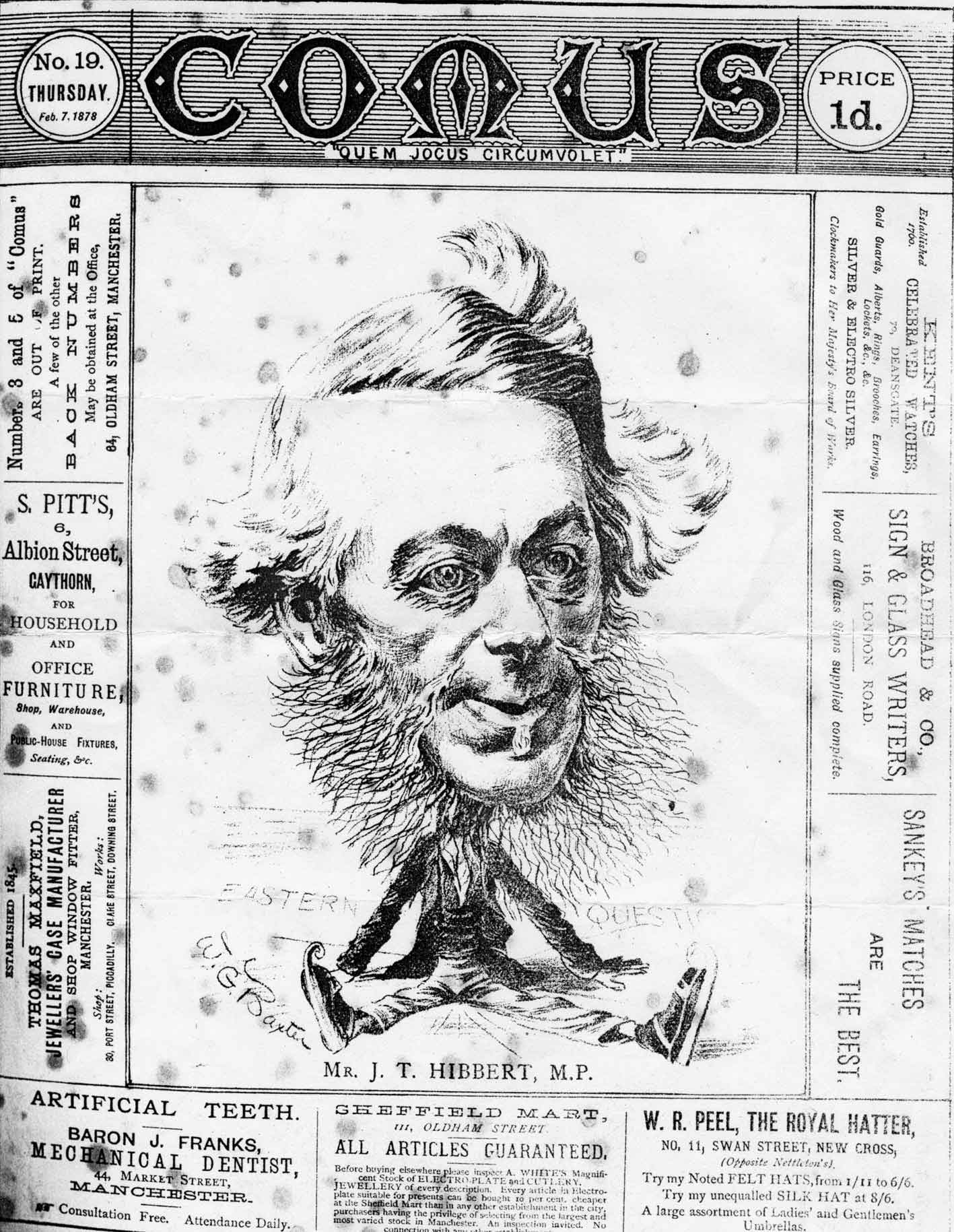
Cartoons of Sir John Tomlinson Hibbert KCB b.1824 d.6 November 1908
More photos below
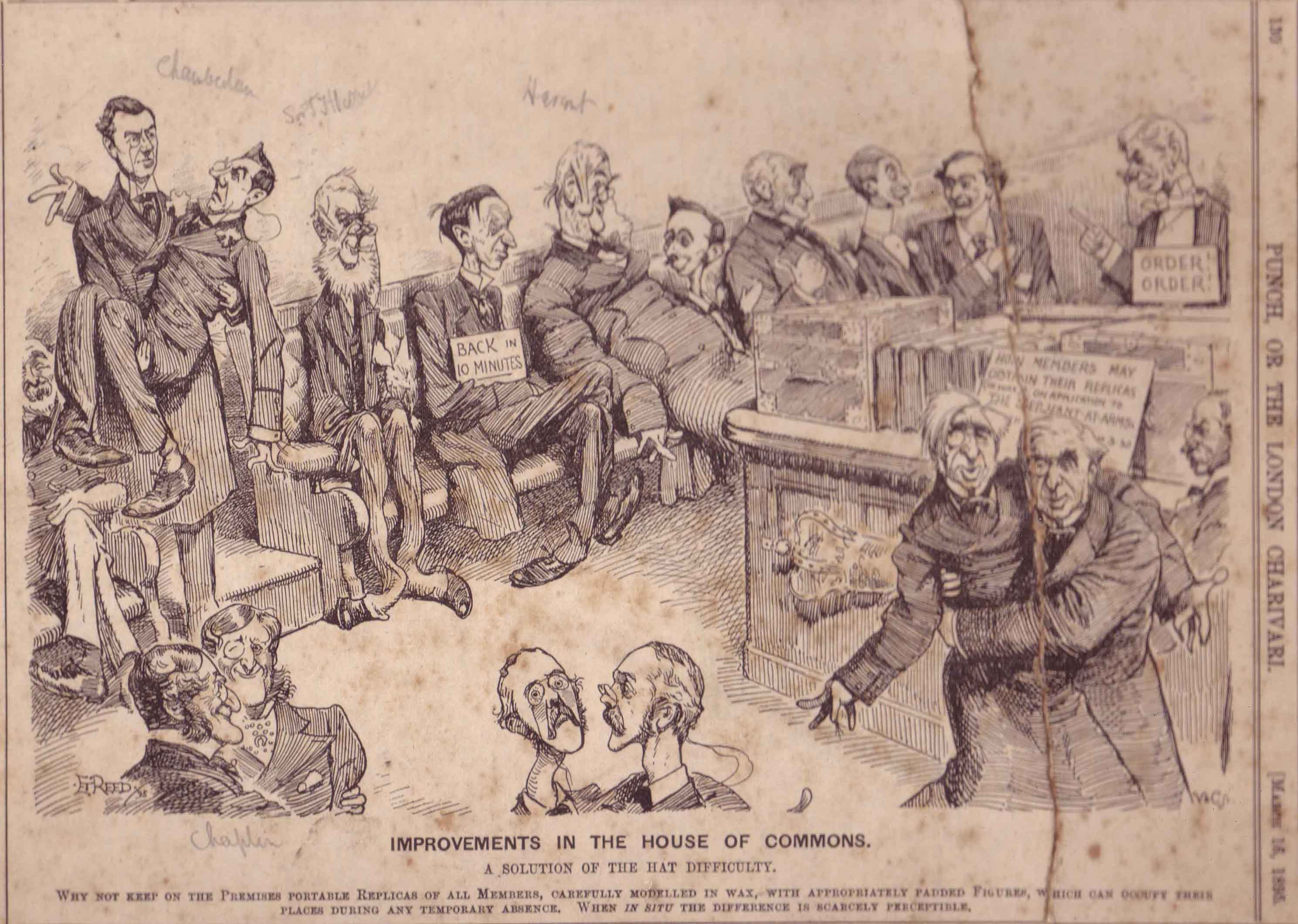
Cartoons of House of Commons members including Sir John Tomlinson Hibbert KCB
More photos below
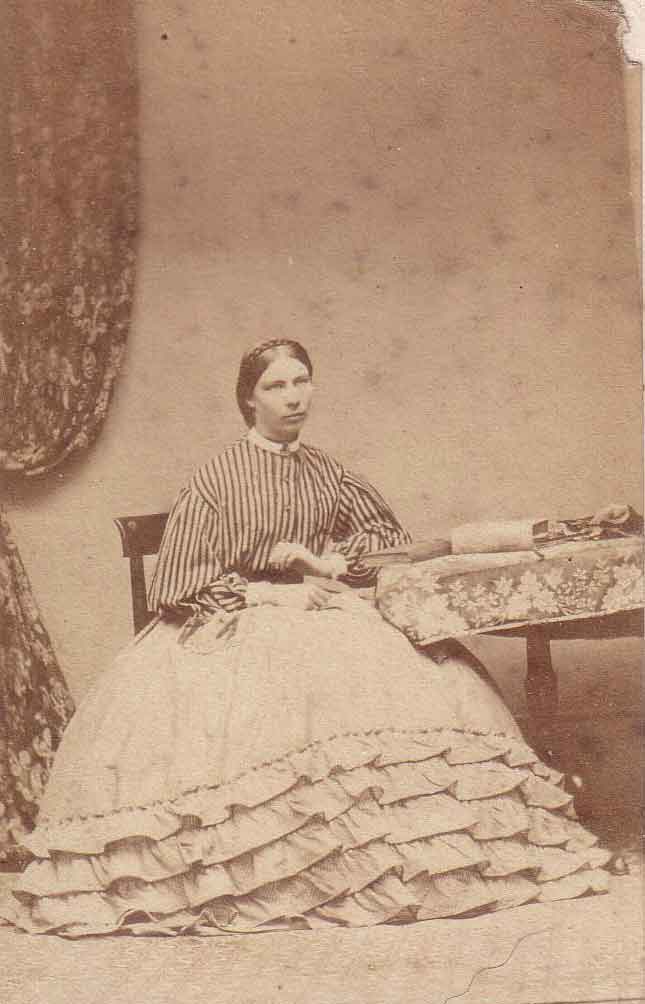
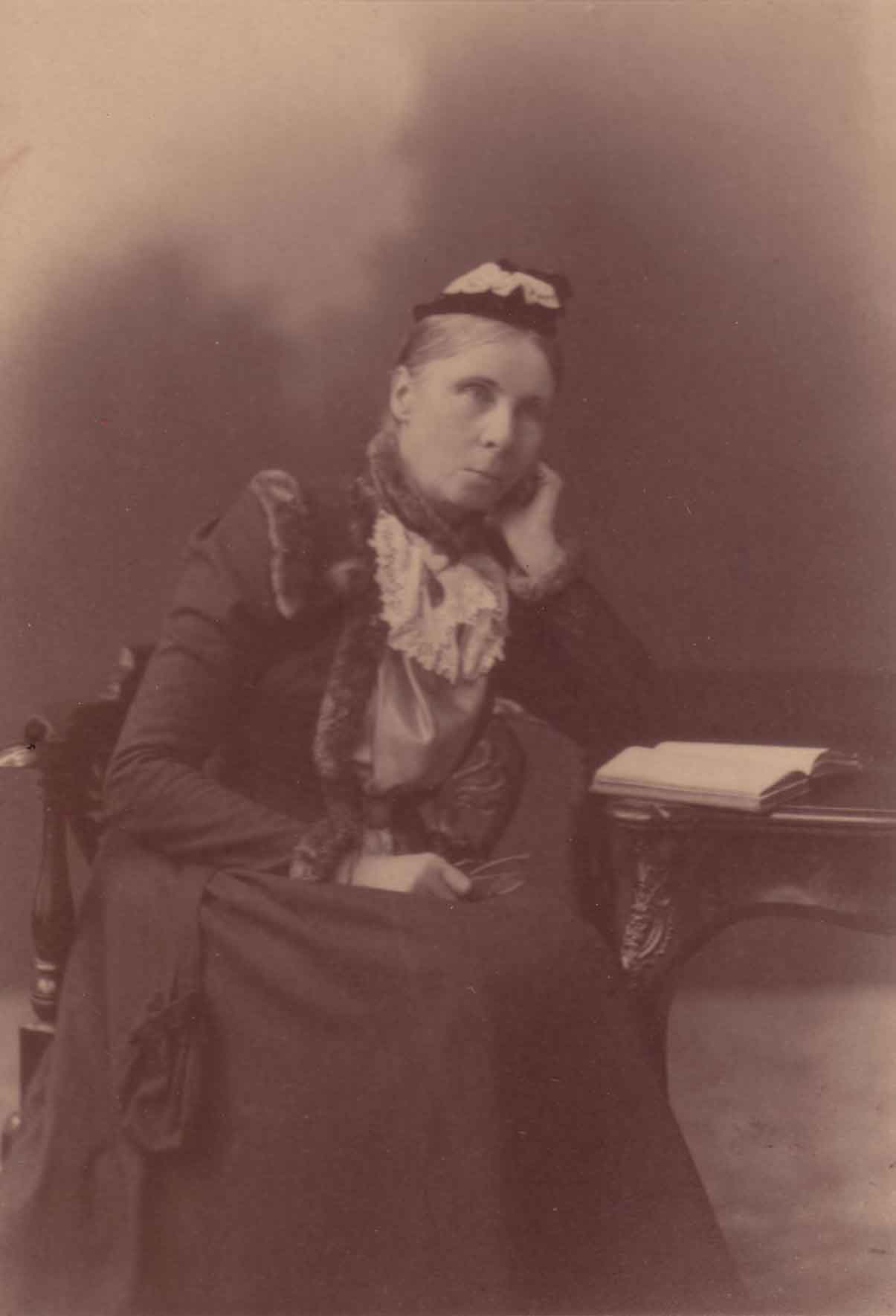
Charlotte Warde, Lady Charlotte Hibbert, Sir John's second wife
More photos below
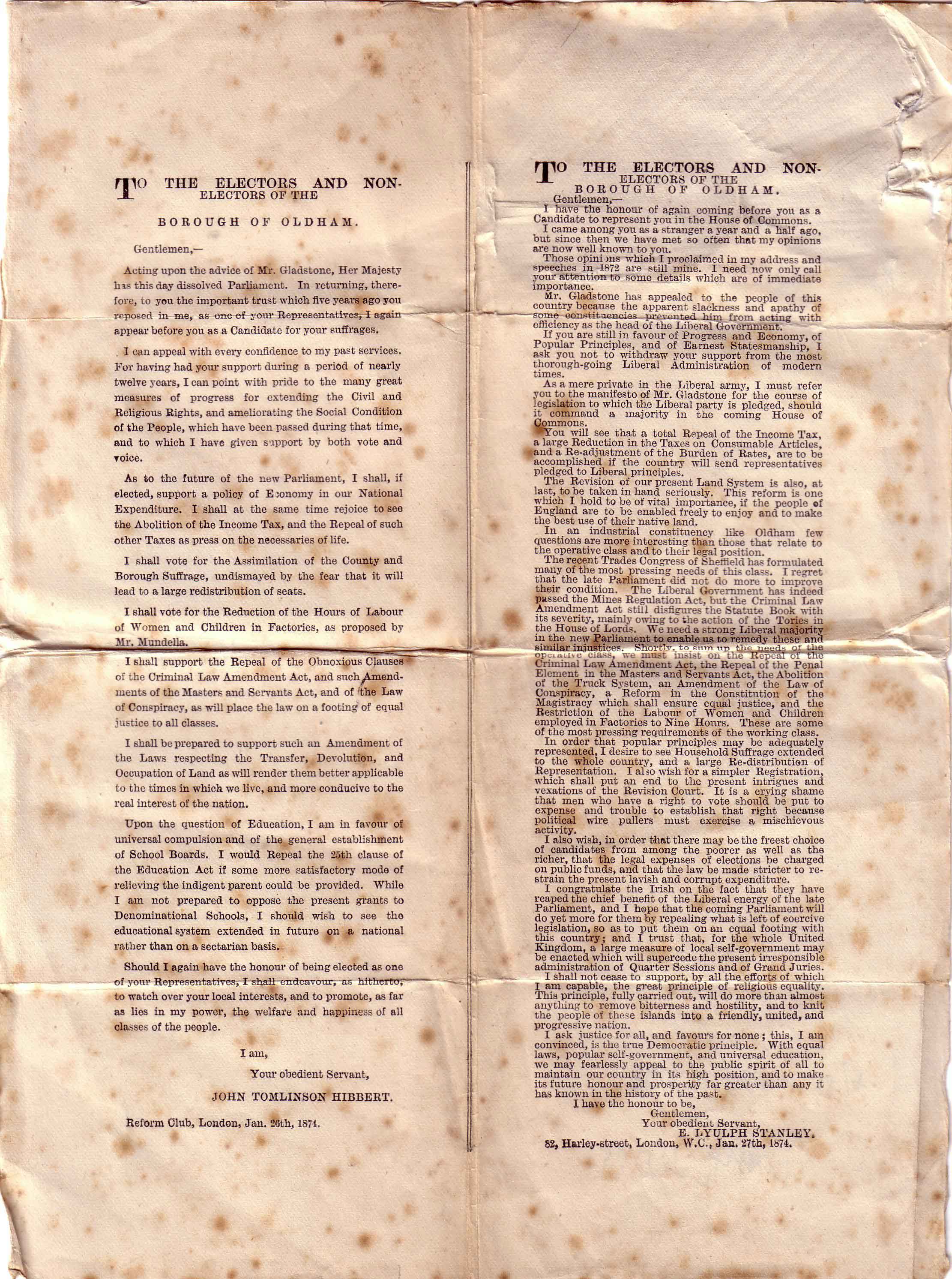
Election leaflet 1874
More photos below
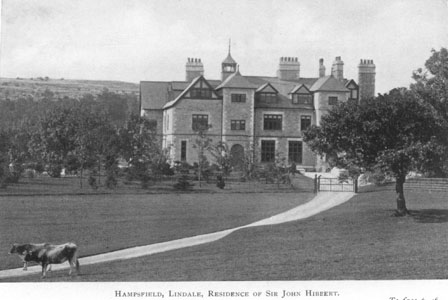
Hampsfield above Lindale, built by Sir John Hibbert, soon after its construction.
Contact the author and navigate this site
- Index list of names found in the Anderson, Beckett, Geddes, Hibbert, Jeans, Jeffrey, Murray and Pike family trees
- Anderson of Inverugie, Scotland - first of 9 generations of Anderson family tree
- James Robertson Beckett - first of 5 generations of Beckett family tree
- "Tacksman" David Geddes - first of 10 generations of Geddes family tree
- Joseph Hibbert of Lancashire - first of 9 generations of Hibbert family tree
- George Henry Jeans - first of 6 generations of Jeans family tree
- John Jeffrey - first of 5 generations of Jeffrey family tree
- John Murray - first of 9 generations of Murray family tree
- Richard Pike - first of 9 generations of Pike family tree
- Details of two Holiday cottages near Cartmel, Cumbria (South Lakes), with the Silver Award for Green Tourism.
- Broughton Bank Perry and Cider near Cartmel, Cumbria (South Lakes), Perry and Cider and their vinegars naturally brewed from local fruit.
Want to ask questions, offer information or pictures, report errors, suggest corrections or request removal of personal information? Contact author
Notes on sources
Anderson family tree
Information is largely taken from the book 'The Andersons of Peterhead'. This was based on the records made by John Anderson 1825/1903 [VIII 32], known as 'China John'. This was brought up to date in 1936 by Cecil Ford Anderson [X 17] and Agnes Donald Ferguson [CS 45 X b]. Many photographs were taken and compiled in an album by Olive Edis (daughter of Mary Murray, daughter of Andrew Murray (2) of Aberdeen). Corrections to both Janet Innes Anderson's and Alexander Murray's death dates from Robert Murray Watt and Iain Forrest.
Forrest family tree
Iain Forrest kindly supplied material to update the Forrest family (progeny of William Forrest) details.
Hibbert family tree
The information is largely taken from a tree compiled by F.B. (she knows who she is!) with extra material found by the author.
Murray family tree
The 'Genealogical Table showing various branches of the Murray family', from which this information was taken, was prepared by Alexander Murray of Blackhouse, extended by Andrew Murray - advocate - Aberdeen circa 1880 and further extended by Arthur Murray Watt 1972. The generational notation is the author's.
Pike family tree
Information from family sources as well as 'Burke's Landed Gentry' 1875
Stevenson family tree and many Stevenson and Anderson photos
Deepest thanks for some fantastic pictures and for writing the wonderful book 'Jobs for the Boys' to Hew Stevenson, which you can see on www.dovebooks.co.uk.
And the rest
Thanks also to all who have written in with information, advice, help and, most importantly, corrections.
© John Hibbert 2001-2013
28 February, 2021